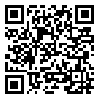BibTeX | RIS | EndNote | Medlars | ProCite | Reference Manager | RefWorks
Send citation to:
URL: http://ijpcp.iums.ac.ir/article-1-2018-en.html

 , , Fatemeh Hadavandkhani2
, , Fatemeh Hadavandkhani2 
 , Touraj Hashemi Nosrat Abad1
, Touraj Hashemi Nosrat Abad1 
 , Majid Mahmoud Aliloo1
, Majid Mahmoud Aliloo1 
 , Abbas Bakhshipour Roudsari1
, Abbas Bakhshipour Roudsari1 

2- Faculty of educational sciences and psychology, Tabriz University ,
Objectives : The objective of this research was to study the relationship between autistic-like and schizotypal traits. Method: One hundred and eighty four students from Rey city, aged 16-19 were selected by cluster random sampling. They completed the Autism Quotient-Persian version (AQ) and the Schizotypal Personality Questionnaire (SPQ). The data was analyzed using Pearson’s correlation coefficient and Structural Equation Modelling (SEM). Results: Analysis found a correlation between the overall AQ and SPQ scores and also between their subscales. SEM results indicated that there is a strong structural relationship between schizotypal traits and autistic-like traits (r=0.91, p<0.05) and that negative schizotypy (r=0.91) and the “communication” subscale from the AQ (r=0.61) played a central role in this relationship in comparison to other subscales. Thus autistic-like traits and schizotypal traits overlapped on interpersonal and communication dimensions. Disorganized schizotypy was also positively correlated with the “communication” subscale from the AQ. Conclusion: Autistic-like traits showed a strong structural correlation with schizotypal traits. It was also positively correlated with positive schizotypy, negative schizotypy and disorganized schizotypy. Given the considerable similarities in the symptoms of these two spectra, especially in the interpersonal domain, it is recommended that more specific and accurate criteria be considered for diagnostic distinction between the two disorders.
Received: 2013/10/27 | Accepted: 2013/10/27 | Published: 2013/10/27
| Rights and permissions | |
 |
This work is licensed under a Creative Commons Attribution-NonCommercial 4.0 International License. |

